Researcher's profile
On this page we present a selection of guest researchers at the museum and their exciting research conducted within the SYNTHESYS project. It is impossible to present all visiting scientists but we aim at representing broad spectra of research.
Read more about SYNTHESYS+ Access, Research and Network actvities here: https://www.synthesys.info
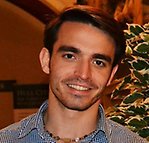
Michael Berthaume
Michaels's research focuses on the interface between mechanical engineering and biological anthropology, in particular, he is interested in tooth biomechanics, dietary mechanical properties, cross-sectional geometry and long bones, and the application of finite element analysis (FEA) to biological systems.
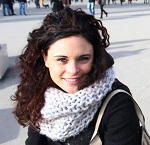
Irene Cornacchia
Irene's research aims to understand how climatic changes affected the carbon cycle and the atmosphere-hydrosphere system in the deep past. She stayed at the museum in February 2016.

Morten Tange Olsen
Morten stayed at the museum three weeks in May 2015. His research focuses on the environmental and genomic factros that govern host-pathogen dynamics.
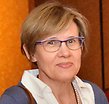
Christine Strullu-Derrien
Christine stayed two weeks at our museum and studied relationships between plants and fungi at the department of paleobiology. She also enjoyed Stockholms Old town during the visit.
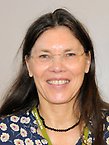
Frietson Galis
Frietson Galis is a evolutionary developmental biologist from the Netherlands and her research is focused on the evolution of body plans of vertebrates. She address questions such as, why do some traits hardly ever change, whereas others are extremely variable.
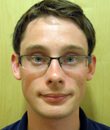
Peter Heintzman
Peter Heintzman's research focuses on the effects of the last ice age on several species of beetle, utilizing both museum and ancient DNA. He is a PhD/graduate student from University of London and worked at the Swedish Museum of Natural History during four weeks 2011.
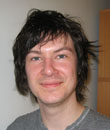
Ben Slater
Ben Slater visited the department of palaeobotany for six weeks in the spring of 2010. He studied 260 million-year-old fossil plants from Antarctica. The principal objective of his thesis is to reconstruct the vegetation of the late Palaeozoic in the Prince Charles Mountains, East Antarctica.

Morten Elemeros
Morten Elmeros visited the Department of Contaminant Research for five weeks in the autumn of 2008. He studied the Swedish otter population, with the aim to examine reproductive traits of otters from different regions in Sweden, e.g. seasonal breeding patterns, reproductive rate and litter sizes.
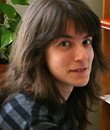
Ana Millanes
Ana Millanes visited the Department of Cryptogamic Botany for five weeks in the spring of 2008, supervised by Mats Wedin. The aim of her visit was to work with a survey of the morphological characters of the group Tremellales, that include common spices of “jelly fungi" as Tremella mesenterica (“Which´s butter") among others.
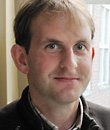
Zsolt Benko
Zsolt Benko from Budapest in Hungary visited the Laboratory for Isotope Geology for six weeks during October and November 2007. This was his first trip to Sweden and The Swedish Museum of Natural History. He was impressed by NRMs exhibitions and their interactive parts, unusual in Hungary, as well as the number of families with children he saw visiting the museum.
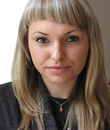
Izabela Sadowska-Woda
Miridae-Cylapinae, a species-rich group of plant bugs, was the main topic of Izabela Sadowska-Woda´s research. She came from the University of Rzeszow and visited the department of Entomology in the beginning of 2007 to study the entomological collections.
Find out more about Izabela
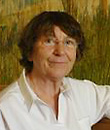
Ingeborg Soulie-Marsche
Ingeborg Soulie-Marsche´s objective was to investigate modern and fossil Charophytes. Her reasons for visiting the museum was the invaluable collection of Charophyte fructifications from both living and fossil species, hold by NRM, and the possibility to investigate these by the scanning electron microscope (SEM). Ingeborg Soulie-Marsche visited the department of Palaeobotany July-August 2006.
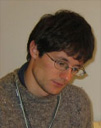
Simone Fior
This was not Simones first visit to the museum, he first came as an Erasmus student in 2001 and then via the HighLat program in 2004. He gained very much from the experience and help of the people working at NRM, and as a young systematist Simone found the experience very educating.
.jpg)
Sven Baier
Sven Baier from the University of Frankfurt visited the department of Palaeozoology from 15 August to 6 September 2005, and was hosted by Elena Dunca.
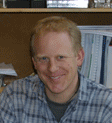
Tim Beck
Tim Beck, from the Institute of Palaeontology at the University of Erlangen-Nuremberg (Germany), was guest scientist at the Departement of Invertebrate Zoology from February to April 2006.
.jpg)
Marco Quintilani
The reasons that Marco chose to come to Sweden were many, but foremost it was the expert knowledge and the advanced technological equipment at Naturhistoriska riksmuseet. Studying the collections was not the highest priority on Marcos´s list since the purpose of his visit here in Sweden was to create artificial minerals under controlled circumstances as well as to better understand what controls the mineral building processes within Earth´s crust.

Anthea Gentry
Anthea Gentry, Research Associate at the Natural History Museum in London, studied the extensive and historic collection of mammals and birds used by Linnaeus in describing many new taxa in February-March 2006. Once completed, the work will make known the specimens seen by Linnaeus, their identity in the light of modern taxonomy, and will provide descriptions and coloured photographs.


